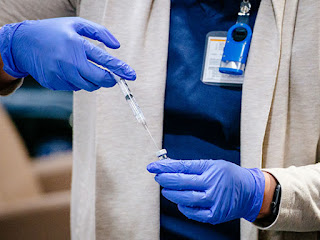Non-specific effects of veterinary vaccines
The benefits of vaccines focus on specific effects on subsequent infections by target pathogens. However, recent studies have opened new insights into the additional effects of vaccines known as non-specific effects (NSEs) or heterologous effects of vaccines. Although several articles have reviewed the epidemiological and immunological evidence of NSE from human vaccines, there are few similar studies on veterinary vaccines. The purpose of this paper was to review the results of published studies on NSE from vaccines designed or reused for use in animals. As of April 30, 2021, a total of 8412 titles were retrieved from the PubMed and CABI databases. After the final stage of screening, 45 eligible articles were included in the review. The data in these articles are summarized and presented here. In general, most of the vaccines reviewed in the reviewed articles have beneficial NSEs for multiple pathogens and medical conditions. However, few studies report harmful NSEs from both non-live and live vaccines, as opposed to existing evidence for beneficial NSEs from live vaccines and harmful NSEs from non-live vaccines. This review can be used as an adjunct to future reviews of NSE RCT studies from vaccines in animals and will be a useful aid to the evolving understanding of NSEs from vaccines. Non-living human vaccines are associated with adverse non-specific effects (NSE), especially in women. A large study found that all-cause mortality in girls vaccinated with the new malaria vaccine was doubled compared to the rabies vaccine used as a control. A beneficial NSE for rabies vaccine has been proposed. Conversely, increased mortality was observed in females but not in males after rabies vaccination of puppies born to immunized mothers. We investigated the NSE of the non-living rabies vaccine in piglets and the potential alteration effect of the maternal primary vaccination with the rabies vaccine. In a Danish herd of commercial pigs free of rabies virus, 575 pregnant sows (2-3 weeks before planned delivery) and 5747 offspring (median 6 days of age) were live animals. None (Versiguard rabies vaccination) or rabies vaccination without rabies was assigned. (1: 1). vaccination. The results were all-cause mortality and antibiotic treatment until leaving kindergarten (approximately 12 weeks of age / 30 kg).




Comments
Post a Comment